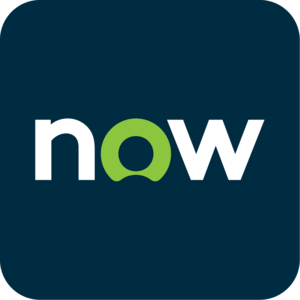How to Deliver Exceptional Customer Service with Salesforce Omni-Channel
Updated on December 28, 2025
In the digital era, exceptional customer service isn’t merely about issue resolution; it’s about crafting a seamless and personalized experience across multiple channels. Salesforce Omni-Channel emerges as a potent solution, empowering businesses to manage and deliver top-notch customer service via a unified platform. This feature facilitates routing work to the right agents, equips them with essential tools, and enables performance monitoring and improvement. However, leveraging Salesforce Omni-Channel effectively requires a strategic approach and tackles specific challenges for seamless implementation.
Benefits of Salesforce Omni-Channel
Route work to the right agents at the right time.
Omni-Channel allows you to assign work items, such as cases, chats, messages, or tasks, to your agents based on their availability, capacity, skills, and priority. You can also use different routing methods, such as queue-based, skill-based, or external, to suit your business needs and optimize your resources.
Empower your agents with the tools and information they need.
Omni-Channel integrates with Salesforce Service Cloud, which provides your agents with a unified and intuitive interface to access customer data, history, preferences, and context. Your agents can also leverage the power of artificial intelligence (AI) with Einstein Bots, which can handle common inquiries, gather information, and escalate to human agents when needed.
Monitor and improve your service performance and quality.
Omni-Channel gives you real-time visibility into your service operations, such as agent status, workload, queue size, wait time, and service level agreements (SLAs). You can also use reports and dashboards to track and analyze key metrics, such as customer satisfaction, resolution time, and first contact resolution. You can also use feedback surveys to collect and act on customer feedback.
Use Cases of Salesforce Omni-Channel
Customer service across multiple channels.
You can use Omni-Channel to provide consistent and personalized service to your customers through various channels, such as phone, email, chat, social media, or self-service. You can also integrate Omni-Channel with Einstein Bots, which can handle common inquiries, gather information, and escalate to human agents when needed. For example, you can use Omni-Channel to route chat requests from your website or mobile app to the most qualified and available agents, who can access customer data and context from Service Cloud. You can also use Omni-Channel to send automated responses to customer emails or social media posts and assign them to agents based on their skills and priority.
Sales and marketing across multiple channels.
You can use Omni-Channel to connect with your prospects and customers across multiple touchpoints, such as web, mobile, email, or SMS. You can also integrate Omni-Channel with Marketing Cloud, which can help you create and execute personalized and targeted campaigns across different channels. For example, you can use Omni-Channel to send SMS messages to your leads or customers based on their behavior or preferences, and route their responses to the appropriate sales or service agents. You can also use Omni-Channel to track and measure the effectiveness of your campaigns and optimize your marketing strategy.
Field service across multiple channels.
You can use Omni-Channel to manage and optimize your field service operations, such as scheduling, dispatching, tracking, and reporting. You can also integrate Omni-Channel with Field Service, which can help you deliver fast and efficient service to your customers on-site. For example, you can use Omni-Channel to assign work orders to your field technicians based on their location, availability, skills, and priority. You can also use Omni-Channel to communicate with your technicians and customers through different channels, such as phone, chat, or SMS. You can also use Omni-Channel to monitor and improve your field service performance and quality.
Challenges of implementing Salesforce Omni-Channel
Choosing the right routing method.
Omni-Channel offers three routing options: queue-based, skill-based, and external. Each option has its own advantages and disadvantages, and you need to consider your business needs, goals, and resources before selecting one. For example, queue-based routing is simple and easy to set up, but it may not be optimal for complex or specialized work items. Skill-based routing can match work items to the most qualified agents, but it requires more configuration and maintenance. External routing can leverage third-party systems or custom logic, but it may introduce more complexity and dependency.
Integrating with other systems and channels.
Omni-Channel can handle various types of work items, such as cases, chats, messages, or tasks, from different channels, such as phone, email, chat, social media, or self-service. However, to provide a seamless and consistent customer service experience across multiple channels, you need to integrate Omni-Channel with other systems and platforms, such as Marketing Cloud, Field Service, Einstein Bots, or third-party applications. This may require additional development, testing, and troubleshooting, as well as ensuring data quality and security.
Monitoring and improving service performance and quality.
Omni-Channel gives you real-time visibility into your service operations, such as agent status, workload, queue size, wait time, and service level agreements (SLAs). You can also use reports and dashboards to track and analyze key metrics, such as customer satisfaction, resolution time, and first contact resolution. You can also use feedback surveys to collect and act on customer feedback. However, to effectively monitor and improve your service performance and quality, you need to define and measure the right indicators, set and enforce the appropriate standards, and identify and address the root causes of any issues or gaps.
Strategies for Effective Implementation
1. Strategic Planning
Before implementing Salesforce Omni-Channel, it’s crucial to conduct a comprehensive assessment of your business needs, goals, and available resources to select an appropriate routing method.
Assessing Business Needs: Understanding your business requirements is essential. Consider the volume and complexity of work items and the skills and availability of your agents. This evaluation will help determine whether queue-based, skill-based, or external routing is most suitable. For instance, queue-based routing is simpler but might not be optimal for complex tasks, while skill-based routing requires more setup but ensures work items are matched with qualified agents.
Balancing Simplicity and Efficiency: While selecting a routing method, it’s important to strike a balance between simplicity and efficiency. Opting for a method that aligns with your business needs while not overly complicating the setup or maintenance process is crucial.
2. Comprehensive Integration
Seamless integration across various systems and channels is vital for the success of Salesforce Omni-Channel implementation.
Prioritizing Integration: Ensure that Salesforce Omni-Channel integrates seamlessly with other systems such as Salesforce Service Cloud, Marketing Cloud, Field Service, Einstein Bots, and any third-party applications. This integration will enable a unified platform for agents to access data and provide consistent service across multiple channels.
Thorough Testing and Data Security: Before deployment, thorough testing of the integrated systems is necessary to ensure they function cohesively. Moreover, emphasis should be placed on data security and quality to safeguard customer information and maintain service reliability.
3. Performance Measurement and Improvement
Defining and measuring performance indicators while actively seeking ways to enhance service quality are pivotal for a successful implementation.
Defining KPIs: Establishing Key Performance Indicators (KPIs) allows you to measure and track the effectiveness and efficiency of the customer service provided through Salesforce Omni-Channel. Metrics such as customer satisfaction, resolution time, first contact resolution, and response times can be vital KPIs.
Continuous Improvement: Actively address and incorporate customer feedback into the service improvement process. Employing feedback surveys and monitoring customer satisfaction levels will aid in identifying areas for improvement. Continuous iteration and enhancement of service quality will help in meeting customer expectations and refining service delivery over time.
Conclusion
Salesforce Omni-Channel is a robust tool that revolutionizes customer service by streamlining operations across various channels. Implementing this tool requires a strategic approach, balancing the benefits with the challenges. By selecting the right routing method, ensuring seamless integration, and actively monitoring and improving service quality, businesses can unlock the full potential of Salesforce Omni-Channel, delivering exceptional customer experiences and staying ahead in a competitive market.
By following these strategies, businesses can ensure they’re making the most of Salesforce Omni-Channel, transforming customer service and creating lasting positive impressions in the minds of their customers.






